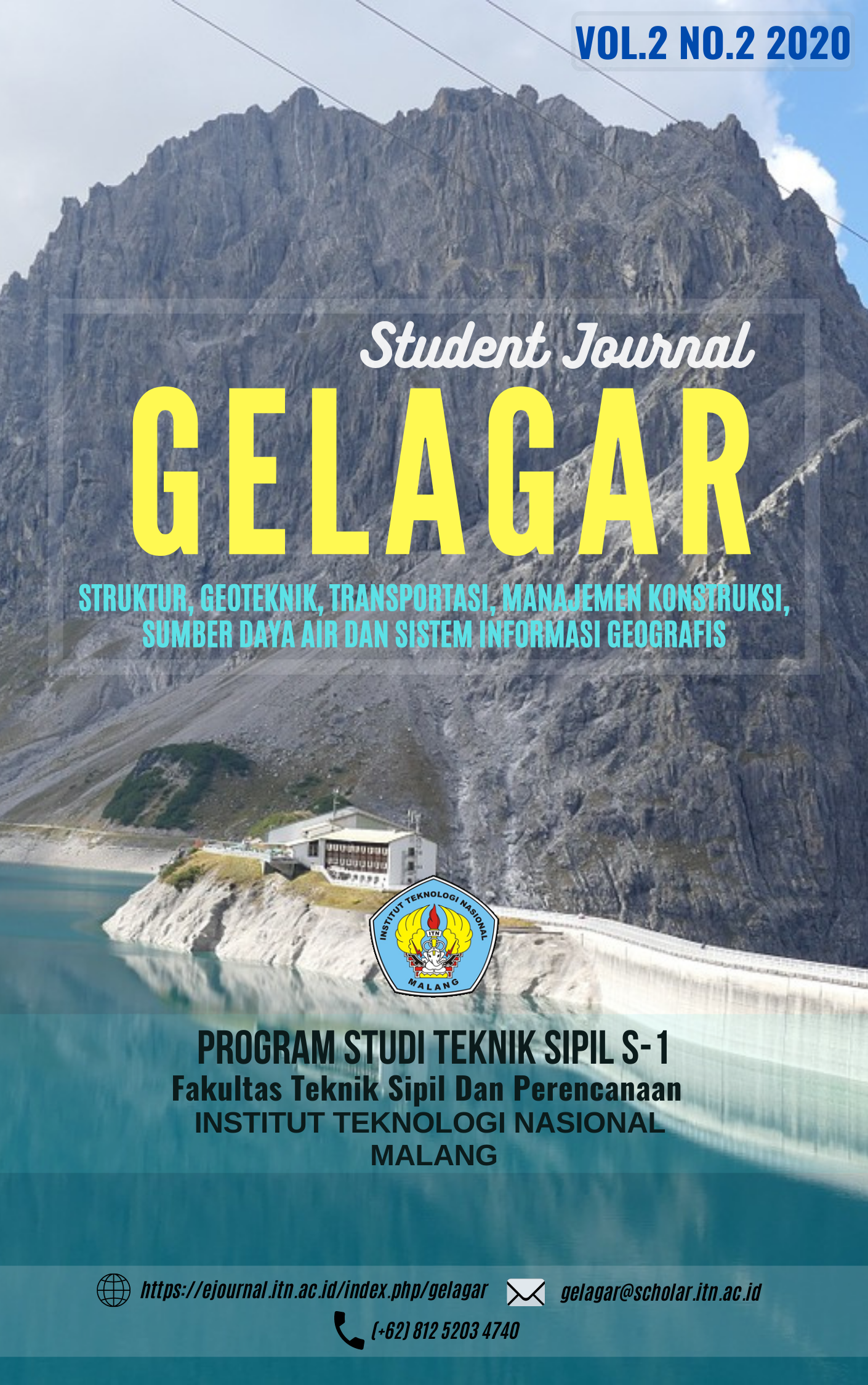PENGARUH PASIR PANTAI SIPELOT SEBAGAI PENGGANTI AGREGAT 0/5
Studi Kasus : Campuran HRS-WC (Hot Rolled Sheet - Wearing Course)
Abstract
Equitable infrastructure development continues to experience growth not only in Java but throughout Indonesia, especially in road construction. requires alternative materials of other natural sources in order to always meet the needs in road construction. Beach sand can affect the parameter values of the Marshall Test characteristics. Therefore, this study is expected to produce a better mixture of HRS-WC pavements. The research method used was experimental which was carried out at the Civil Engineering Construction Materials Laboratory of the National Institute of Technology Malang from February to May 2020. This study used variations in the levels of Sipelot Beach Sand of 25%, 50%, 75%, 100%, to find the optimum percentage. , in terms of the Marshall characteristic value. Based on the results of testing Sipelot beach sand as a substitute for aggregate 0/5 in the Hot Rolled Sheet-Wearing Course (HRS-WC) mixture with beach sand variations of 25%, 50%, 75% and 100% affect the Marshall characteristic values. Hypothesis testing for stability, VIM, VMA, MQ and VFA obtained Fcount> Ftable and it can be stated that there is a significant effect by adding variations in beach sand, while for flow there is no significant effect. The optimum percentage of use of beach sand was obtained at a variation of 37.63% with a stability value of 1178.93 kg, flow 3.53 mm, VIM 4.88%, VMA 19.78%, VFA 75.34%, and Marshall Quetient 335.20 Kg / mm.


